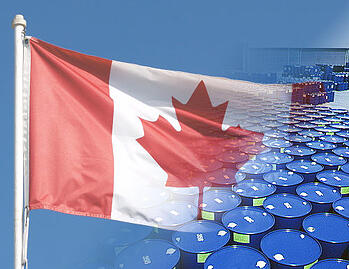 Canada’s Chemical Management Plan (CMP) was originally created in 2006 with the goal of measuring and controlling the use of potentially hazardous chemicals by Canadian manufacturers.
Canada’s Chemical Management Plan (CMP) was originally created in 2006 with the goal of measuring and controlling the use of potentially hazardous chemicals by Canadian manufacturers.
However, the CMP has faced a great deal of criticism from Canadian Manufacturing groups, as they felt wording of the original plan and some of the regulatory requirements had created an unreasonable reporting burden for some manufacturers:
“The Domestic Substances List (DSL) Inventory Update is aimed at targeting those companies who manufacture and import the substances to capture them at the point of entry into Canada. This change required the reporting of "all" listed substances, which meant for some CME [Canadian Manufacturers & Exporters] members that they would need to report on thousands of substances. Modern, high-tech, complex products such as vehicles, airplanes, and trains, have thousands of production parts, many of which have chemicals that would have been captured under the most recent DSL inventory update. Many of the parts would be made in countries where reporting of chemicals is not a requirement, making tracing and reporting of the components even more problematic for regulators and manufacturers.”
CME group argued that this approach to chemical management went against a science-based regulatory environment and began to work with Environment Canada:
“Working with Environment Canada, CME has recently received an updated draft regulatory guidance document that significantly clarifies the rules for manufacturers and puts limitations on the words "all" and/or "any" substances. CME's focus has been on updating the guidance document wording to ensure unnecessary reporting of chemicals is minimized by using a risk-based approach and allowing for more effective reporting by manufacturers. Environment Canada has agreed, in principle, to change wording accordingly to ensure efficiency and technical feasibility of the requirements.”
You can read the entire article at CME’s magazine 20/20.
There are three important takeaways from this article:
- First, and most importantly, that the improvements that have been agreed to by Environment Canada are not yet written into law, and are in no way guaranteed. It is essential that you keep up with the official CMP documentation before you adjust your chemical and environmental management plans in any way.
- Secondly, if the CMP’s wording does get revised to take a more risk-based approach to Canadian chemical management, you may stand to save thousands of dollars. How will you reinvest that money into your environmental management?
- The CME’s involvement is a good case study in the power of public involvement in the development of environmental regulation. By working alongside Environment Canada and using a science-based approach, CME may have been able to positively influence the regulatory environment.
Image Credit: Trazomfreak
This Blog was Co-Authored By:


Tags:
Chemical Management
August 14, 2012

Comments